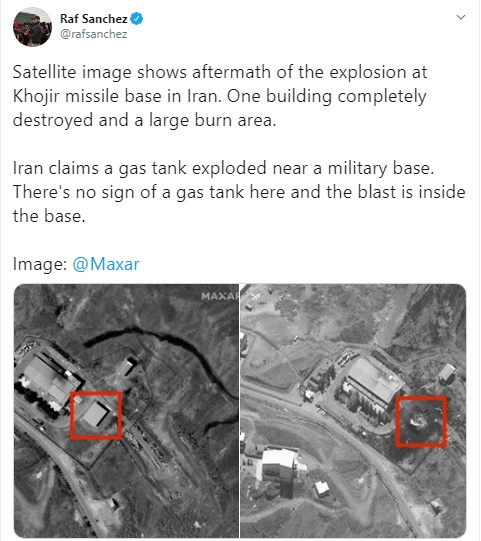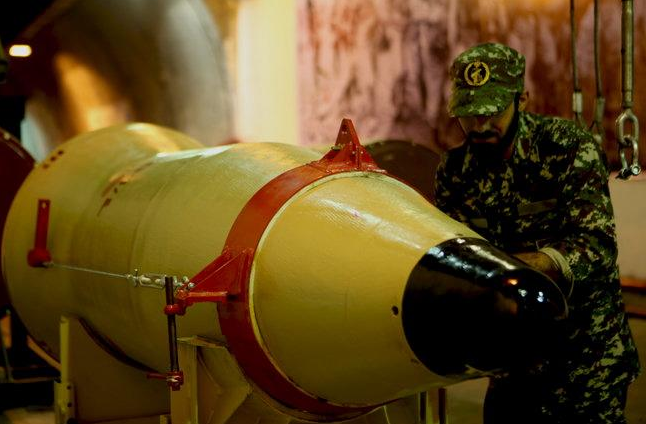A huge blast destroyed big parts of a secret facility in Parchin, which is associated with Iran's nuclear program. As per experts, a kinetic cyberweapon was used to conduct the operation that caused extensive damage to one of Iran's most important nuclear facilities.
The satellite images showed that a big blast at Parchin took place on Friday, June 26 at a secret site, which initially claimed by the Iranian officials was caused by a gas leak in the "public area" of the Parchin military base.
The gas storage area is part of the Khojir missile facility and the explosion caused extreme damage to the Shahid Bakeri Industrial Group, which makes solid-propellant rockets. The satellite images showed large industrial buildings at the site and suggested that missile assembly was being conducted there.
But a recently published report, quoting several sources claimed that the explosion could have been caused due to a "kinetic cyber" attack that one source said was performed by a "major force."
What Is Kinetic Cyber Attack?

Kinetic Cyber refers to a class of cyberattacks that can cause direct or indirect physical damage, injury, or death solely through the exploitation of vulnerable information systems and processes.
Earlier Scott D Applegate, a cybersecurity expert from the Center for Secure Information System, George Manson University, explained in a paper that Kinetic cyberattacks "are a real and growing threat," which is generally being ignored as unrealistic or alarmist. Such attacks have been validated experimentally in the laboratory environment, they have been used operationally in the context of espionage and sabotage, and used criminally in a number of attacks throughout the world.
As per Applegate, "While these types of attacks have thus far been statistically insignificant, the rapid growth and integration of cyber-physical systems into everything from automobiles to SCADA systems imply a significant kinetic cyber threat in the near future."
In addition, he said, "it is imperative" that the security community has started to take these types of threats seriously and address vulnerabilities associated with cyber-physical systems and other devices, which could be utilized to cause kinetic effects through cyberattacks.
Digital Strike Behind the Iran Explosion?
An anonymous Israeli security expert told Breaking Defence that a cyber attack could have been used in many ways, for example, "shutting down all the security cameras on a targeted site so security personnel is not aware that someone is doing something."
As per the expert, the nuclear program of Iran was accelerated as Tehran was worried that "continued arms embargo" will make it difficult to obtain systems and materials that are needed to develop a nuclear bomb.

Several media outlets in 2019 reported that as per the U.S. Intelligence Agency, Iran has the largest underground facility program in the Middle East. This facility supports most of Tehran's ballistic missile capabilities that include the operational force, the missile development and production program.
Targeting Iran With Digital Attack
The first major cyberattack against the Iranian nuclear program was launched in 2010 by Israel and the U.S., using the world's first digital weapon called Stuxnet. It was revealed that Stuxnet was unlike any other virus or worm that came before but instead of simply hijacking targeted systems or stealing information from computers, it escaped the digital realm to wreak physical destruction on equipment the computers controlled.
This computer worm, Stuxnet was originally aimed at the nuclear facilities in Iran. The original malware attack had targeted the programmable logic controllers used to automate machine processes.
The malware attack, considered the largest and most expensive malware development effort in history, generated a flurry of media attention after its discovery because it was the first known virus to be "capable of crippling hardware and because it appeared to have been created by the U.S. National Security Agency, the CIA, and Israeli intelligence."









